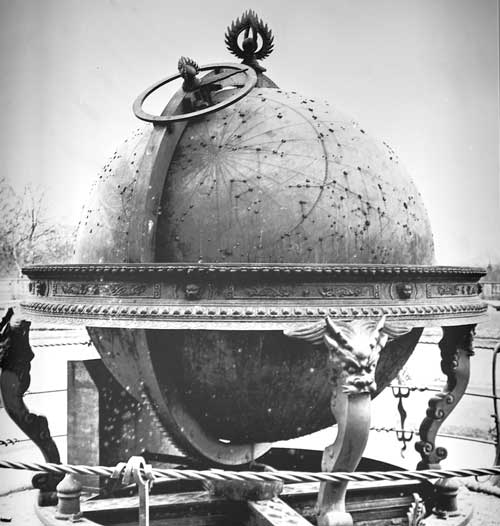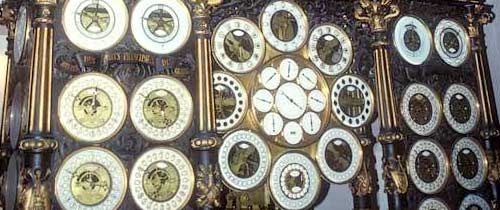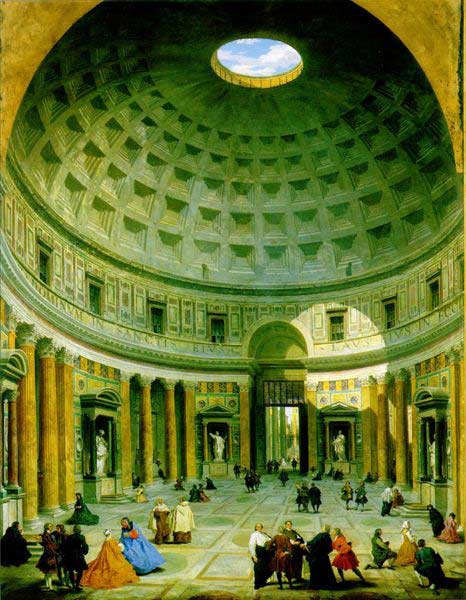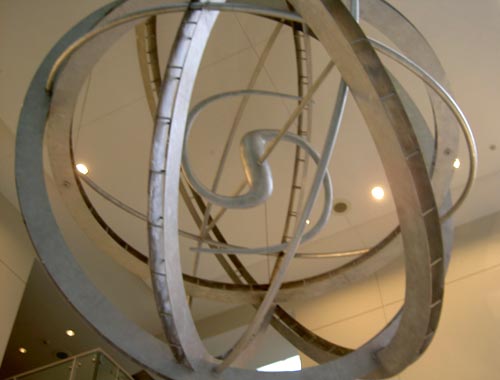March 31st, 2008
The Beijing Observatory is a pretelescopic observatory in Beijing, China, and is one of the oldest observatories in the world. The tools used were built in 1442 during the Ming Dynasty. It has a number of bronze instruments, including a celestial globe. More info.


March 28th, 2008
A starchart globe/planetarium is in the treasure collection at the Forbidden City in Beijing, China.

January 13th, 2008
A huge public clock installed in the European town cathedral in 1860. Much more about it here.

December 4th, 2007
The Pantheon, Greek for “all gods” is a building in Rome which was originally built (about 125AD) as a temple to the seven gods of the seven planets in the state religion of Ancient Rome. It has been in continuous use throughout its history, and since the 7th century, the Pantheon has been used as a Christian church.
The vaulted dome is said to symbolize the heavens and some speculate the symbolism may be more literal than previously realized-read this great Walter Murch interview on BldgBlog. [further info on BldgBlog, GreatBuildings.com]

November 19th, 2007
At the American Museum of Natural History, a huge armillary sphere hangs from the ceiling of the Columbus Street entrance. Traditional armillaries were used to demonstrate the motion of celestial bodies as viewed from Earth. This sculpture was designed with the Milky Way galaxy at its center and positioned to demonstrate New York City’s galactic address-its precise location-on January 1, 2000. Designed by Moey, Inc. and fabricated by ART.

October 29th, 2007
Wildrik Botjes completed his home planetarium in 1868 after 15 years of construction. He was a watchmaker and goldsmith, and lived in The Netherlands. The planetarium passed from person to person in his family, and now resides at Calvin College in Grand Rapids, Michigan, where it was restored and functions today.

October 19th, 2007
Between 1774 and 1781 Eise Eisinga built a solar system model into his living room ceiling in the province of Friesland, The Netherlands.

All the planets in Eisinga’s model orbit the sun at the same speed as do the real planets: Mercury in 88 days, the earth in one year, and Saturn in more than 29 years. It is the oldest still-working model—he left drawings explanations and instructions, including:
- Don’t forget to set the date ring correctly on the leap day.
- Check the speed of the clock during sudden temperature changes.
- Adjust the orbit of Saturn every year because I made a little miscalculation.
- Don’t forget to paint new year numbers every 22 years.







